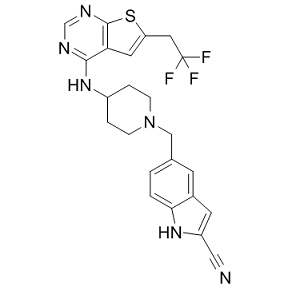Available biological data have strongly suggested that T2D is an inflammatory disease. Many of the immune cells including macrophage, neutrophil and eosinophil are involved directly or by producing inflammatory cytokines in pathology of chronic inflammation. Eosinophil, one kind of immune cells, typically associates with allergy and parasitic infections, regulates the macrophage activation state in mammalian adipose tissue and may have an important role in metabolic homeostasis. In adipose tissue, eosinophil that migrates from the blood into adipose tissue, can produce IL-4 and IL-13, cytokines typically associated with the arm of the immune system that causes allergy but also protect against infection with parasites. These two cytokines induce resident macrophages to become alternatively activated macrophages which improved control of glucose metabolism. Otherwise, downstream of IL-4 receptor a is the nuclear hormone receptor peroxisome proliferator-activated receptor c, and when activated, it inhibits the expression of genes that promote inflammation and protects against insulin resistance. It is possible that the absence of eosinophil in adipose tissue, IL-4 and IL-13 concentrations are too low to  counter the effects of infiltration of T cells that produce IL-6 and TNF-a. However, the present study has several limitations. First, blood cortisol concentration was not tested in our study. Normal human eosinophil had glucocorticoid receptor which was capable of mediating biologic effects at physiologic hormonal concentrations. In obesity, because of a down regulation of 11 b-HSD type 1 in the liver in parallel with an up regulation of the enzyme in adipose tissue, as well as because of increased plasma ACTH levels, cortisol production had a net increase. As a result, glucocorticoids may enhance eosinophil apoptosis through the intracellular glucocorticoid receptors. Second, this was a crosssectional study, and it could not exactly serve as a causal infer. Another limitation is the insulin resistance, which was evaluated by HOMA-IR index or serum insulin levels, instead of the hyperinsulinemic-euglycemic clamp. However, studies show that there is good correlation between estimates of insulin resistance derived from HOMA and from the euglycemic clamp. In conclusion, we found that higher peripheral eosinophil percentage was independently associated with decreased risk of T2D and insulin resistance in middle aged and elderly Chinese. Insulin resistance played an important intermediate role in the association between eosinophil and impaired glucose metabolism. Sepsis is defined as a systemic inflammatory syndrome in response to an infection. Sepsis is an important cause of pediatric morbidity and mortality. The host inflammatory response in sepsis is characterized by aspects of both a hyperactive immune response and immunosuppression. Suppression of T-cell function and T-cell apoptosis in sepsis is well documented.
counter the effects of infiltration of T cells that produce IL-6 and TNF-a. However, the present study has several limitations. First, blood cortisol concentration was not tested in our study. Normal human eosinophil had glucocorticoid receptor which was capable of mediating biologic effects at physiologic hormonal concentrations. In obesity, because of a down regulation of 11 b-HSD type 1 in the liver in parallel with an up regulation of the enzyme in adipose tissue, as well as because of increased plasma ACTH levels, cortisol production had a net increase. As a result, glucocorticoids may enhance eosinophil apoptosis through the intracellular glucocorticoid receptors. Second, this was a crosssectional study, and it could not exactly serve as a causal infer. Another limitation is the insulin resistance, which was evaluated by HOMA-IR index or serum insulin levels, instead of the hyperinsulinemic-euglycemic clamp. However, studies show that there is good correlation between estimates of insulin resistance derived from HOMA and from the euglycemic clamp. In conclusion, we found that higher peripheral eosinophil percentage was independently associated with decreased risk of T2D and insulin resistance in middle aged and elderly Chinese. Insulin resistance played an important intermediate role in the association between eosinophil and impaired glucose metabolism. Sepsis is defined as a systemic inflammatory syndrome in response to an infection. Sepsis is an important cause of pediatric morbidity and mortality. The host inflammatory response in sepsis is characterized by aspects of both a hyperactive immune response and immunosuppression. Suppression of T-cell function and T-cell apoptosis in sepsis is well documented.
The lower eosinophil is not a consequence of T2D but a risk factor for the incidence of T2D
Leave a reply